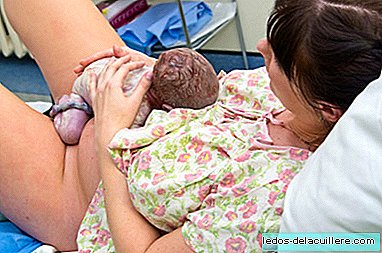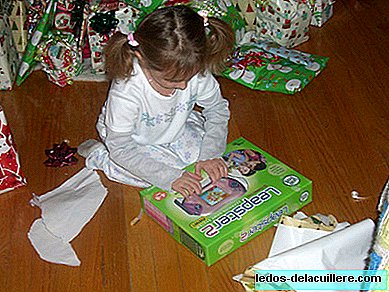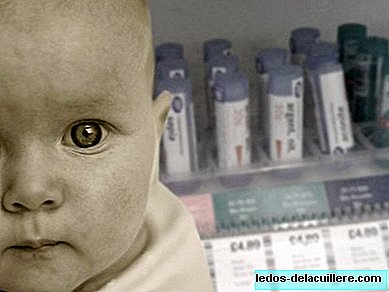
Telma Cavallé is nine years old, and with five he was diagnosed with a neuroblastoma, a cancer tumor that is very difficult to treat. A transplant of the stem cells contained in your umbilical cord has saved your life.
How has it been possible? A few days before his birth, which took place on January 5, 2010, his father decided that he wanted to preserve the blood of his umbilical cord (SCU) at the time of delivery.
Years of treatment with a happy ending
Telma was diagnosed with a stage four metastatic neuroblastoma, one week after reaching the age of five, in January 2015.
As explained by Dr. Jaime Pérez de Oteyza, head of Hematology and Onco-Hematology of HM Hospitals, it is a very aggressive tumor, with a very bad prognosis. More frequent in children, it is treated with chemotherapy, radiotherapy and surgery. “With this, some patients can improve a lot and even go into remission, but in other cases it is more rebellious and needs a hematopoietic progenitor (bone marrow) transplant.”.
 In Babies and more Umbilical cord blood stem cells: everything you need to know if you plan to donate or keep them
In Babies and more Umbilical cord blood stem cells: everything you need to know if you plan to donate or keep themThis is detailed in the video broadcast by HyM Montepríncipe, the hospital where Telma Cavallé was born. The documentary video, shot by the filmmaker Ander Duque, reviews the experiences of Telma and his parents from birth to the detection of the disease and the long process to healing. In these images we can also see the parents of the small, commenting on why they decided to preserve the blood from their cord.
The doctor adds, that this tumor has a success rate of between 30 and 40% of cases. If a transplant is necessary, this is usually autologous (with cells from the same patient). The problem appears when the bone marrow is invaded by the cancer itself, so it cannot be used.
This was the case in Telma, so it was necessary to use the blood from his umbilical cord, which was kept cryopreserved in a private bank. In addition, as the expert points out "By using their own cells, the possibility of rejection was minimized."
But the little girl's way here has been hard and very long. It took a long time to achieve a cancer remission, essential for transplantation. They were four years of combined chemotherapy, with pills and liquids, and their participation in an experimental project that caused serious side effects.
At Christmas 2015, the time came for the transplant, so he was given high-density chemotherapy so that he had greater chances of success. But he ran out of defenses and had to remain isolated for a month in an airtight room of the Maktub Center, of the Aladina Foundation. In mid-January 2016, he was finally transplanted at the Infantil Infantil Jesus Hospital in Madrid. His father, César Cavallé, explains that "After 11 or 12 days, it began to be seen that the body was again generating defenses".
At the beginning of March the surgery took place, where 80% of the tumor was removed and in May it started with radiotherapy. Although as explained by his father, immunotherapy was expected, it can now be said that the marrow is kept clean and there are no traces of the disease.
Since March 2019, its reviews are every six months, and it is considered to be in a state of complete remission.His father confesses that his life has returned to normal by 90%, because there is always uncertainty. But, "After a year and a half of leave, I have returned to work, Telma has returned to school, to her yoga classes, which she loves, to swim, to her English classes ...".
Options to preserve umbilical cord stem cells
According to the National Transplant Organization, in Spain there are seven public banks where to preserve the SCU and after the approval of the old RD 1301/2006 (currently replaced by the RD Law 9/2014), 'by which the quality and safety standards for donation, obtaining, evaluation, processing are established , the preservation, storage and distribution of human cells and tissues', there is also a private bank, where the blood of the umbilical cords is preserved for possible autologous (own) use.
 In Babies and more Stem cells: preserve or not milk teeth, and what differences there are with those of the umbilical cord
In Babies and more Stem cells: preserve or not milk teeth, and what differences there are with those of the umbilical cordIf the parents decide to donate the SCU to a public bank, it is an altruistic and anonymous act, fully funded by Social Security, where the stem cells will be available to anyone who may need them.
If on the contrary they decide to preserve it in a private bank, it will only be used by the donor or his relatives in case of need.
Even so, in both cases, the Decree establishes that if it is conserved in Spain, the stem cells are included in the Bone Marrow Donor Registry (REDMO) and can be used in case of compatible need. Hence, most private banks are located abroad.
In the case of Telma, its own preserved stem cells have been key to healing. If the transplant could have been performed with compatible stem cells from a public bank, probably yes. But in this case the parents had decided to keep the umbilical cord blood privately when the girl was born and were able to dispose of it when necessary.
There are those who disagree with this option, as Dr. Enric Carreras says that preservation in private banks is not justified. But even so, the law contemplates it and parents are free to choose what they think is best for their children.
Photos | iStock












